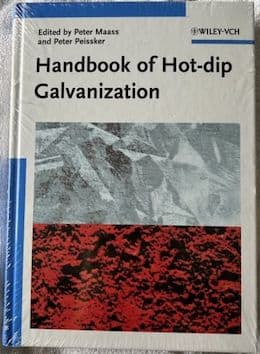
-----
Air pockets a problem when hot dip galvanizing?
I am Investigating a problem involved with using galvanised water to air heat exchangers, and have determined that a possible fix to my problem would be to only hot dip galvanize the outside of the exchanger plates, and would like to know if plugging the ends of mild steel tube approximately 1 m long, 20 mm diameter, would cause any adverse effects (I read somewhere that air pockets inside pieces to be hot dipped could explode due to expansion).
Thanks,
Troy Holdsworthstudent - Perth, Western Australia, Australia
2004
2004
DON'T DO IT !
Never ever under any circumstances immerse a sealed cavity into a molten metal. This is the usual cause of (fortunately rare) explosions at scrap metal remelters and (even less often) at foundries - explosions which at best blow off the roof and at worst demolish the building and all within it.

Bill Reynolds [deceased]
consultant metallurgist - Ballarat, Victoria, Australia
We sadly relate the news that Bill passed away on Jan. 29, 2010.
2004
Someone mentioned to me something about filling the cavity with silicon (normal silicon sealant) which seemed a bit strange to me. And I then spoke to a tech officer at a local galvanizing company who said that a snorkel and clam setup can be used but make the whole process considerably more expensive.
I was wondering if perhaps something else could be used to fill the cavity, or if there is another way to coat ONLY the outside of the pipe?
Thanks
Troy Holdsworth- Perth, Western Australia
Have you considered electroplating? You can electroplate zinc to a thickness of .0006" or a little more, if this is enough. You could also use a more corrosion resistant alloy like zinc-nickel.

Ted Mooney, P.E.
Striving to live Aloha
finishing.com - Pine Beach, New Jersey
Ted can be retained for immediate
answers or long term project help
2004
2004
Thank you for your responses. Unfortunately due to the design of the coolers, they MUST be hot dipped (it is a requirement due to a certain aspect of the design I cannot discuss).
I was thinking that perhaps there is a treatment that could be performed on the galvanizing that would prevent it from forming ZnOH or any other alkaline salts when water is present. This would solve my problem.
Or perhaps if there is some way of easily removing the zinc from the inside (perhaps an acid solution or something like that)?
Kind Regards,
Troy Holdsworth- Perth, Western Australia
Muriatic acid will remove the galvanizing in seconds.

Ted Mooney, P.E.
Striving to live Aloha
finishing.com - Pine Beach, New Jersey
Ted can be retained for immediate
answers or long term project help
2004
Another possibility is to partially immerse the one-side plugged pipes in the galvanizing pot (I mean in a slant position) then cutoff the portion that was not covered, or another variant by bending a portion and provide an open end.
Guillermo MarrufoMonterrey, NL, Mexico
2004
Q, A, or Comment on THIS thread -or- Start a NEW Thread

